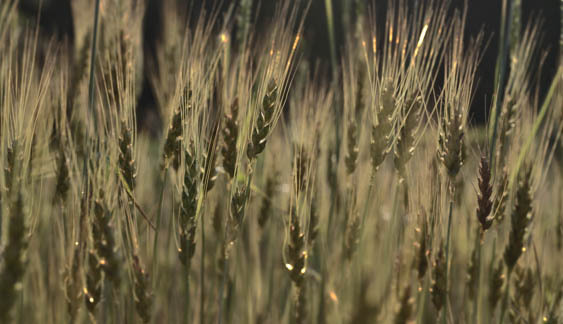Autumn at Anson Mills
September 2008

This fall, Anson Mills is all about wheat.
Within the past couple of years we have expanded our research program to include Red Fife, a premier bread wheat of the 19th century, brought into Canada and the United States from the Ukraine. Like many extraordinary heirlooms, Red Fife became extinct, and was returned to life with determination and tenacity by Canadian growers within the past decade. Slow Food International later put Red Fife on its endangered list. Anson Mills, which began growing Red Fife in 2005, means to keep this extraordinary heirloom thriving—particularly as it has generated a zealous following of artisan bakers. We offer Rustic Red Fife Bread Flour to retail customers for the first time—along with a recipe for this bread.
We are also thrilled to offer Colonial Style Fine Cloth-Bolted Pastry Flour, an exact reproduction of the esteemed pastry flour of the colonial South. Gently milled and hand-screened as it was 200 years ago—through fine silk bolting cloths—this product is unlike any pastry flour on the market today. It’s so fine and cool to the touch that it feels like cream. It is the flour we’ve been dreaming of since we began working with Anson Mills products.
How is Anson Mills pastry flour different? Red May, a foundation wheat from which other wheats were bred, is by modern standards a soft, or pastry, flour to begin with, and one that understands crisping better than any other we know. To make pastry flour we cold-mill this wheat very gently, a process by which the outer bran layer is cut and the interior germ and white starchy endosperm explode, dispersing the germ throughout. The bran is then screened off by hand, a step that further enhances the flour’s crisping characteristics.
Commercial pastry flours by contrast go through the wringer—literally. Modern roller mills scalp first the bran and then the germ from the interior white part of the kernel, then pass the white, starchy endosperm through a series of closer and closer rollers to achieve a uniformly fine texture. Finally, in most cases, comes the bleaching, which make the flour blazing white. The entire process is so aggressive that by the time the flour is finished, it is 100 percent starch and must be fortified with vitamins in order to even qualify as food.
This is a process contrary to everything we believe in.
Here’s another difference between us and the other guys: typically, pastry flour is so soft its uses are limited to biscuits and pie doughs. Not so with Anson Mills pastry flour, which is strong enough to produce a laminated dough yet soft enough to make dumplings.
You will love the results.
We have big plans for this versatile pastry flour—and there is no telling where it will take us. Stay tuned.
Oh, wait, almost forgot! We’ve got peas, fabulous old lowcountry peas! These Sea Island Red Peas come straight off the back burner—that would be the very, very back burner. On rice plantations throughout the Antebellum South they were served as savory gravy companion to Carolina Gold rice grits from morning to night—and called, appropriately, “reesy peezy” (Gullah for rice and peas). African in origin and tiny in size, Sea Island Red Peas were brought to this country by slaves and became a vital player in sustainable rice farming rotation for soil improvement before their production was abandoned along with rice during the depression. Ten years ago, driving through South Carolina’s ACE Basin, Glenn Roberts discovered small collections of feral peas as well cultivated peas in kitchen gardens of families descended from slaves. He was able to return this very valuable companion crop to lowcountry cultivation and currently farms close to 100 acres of red peas in rice rotations. Last November, Sea Island Red Peas and Carolina Gold Rice were inducted into the Slow Food Ark of Taste.
Carolina Gold Rice, in any form, can be cooked beside the Slow-Cooked Sea Island Red Peas, and reezy peezy is served as simple rice with gravy ladled over it. Authentic ingredients for making Sea Island Red Peas include smoked pork neck, wild or cultivated alliums, wild mushrooms, and spices that run the spectrum from simple dried red pepper and wild laurel to a fresh toasted variant of curry, plus sea salt. These are remarkable foods that inscribe comfort and lasting palate impressions on anyone fortunate enough to taste them.